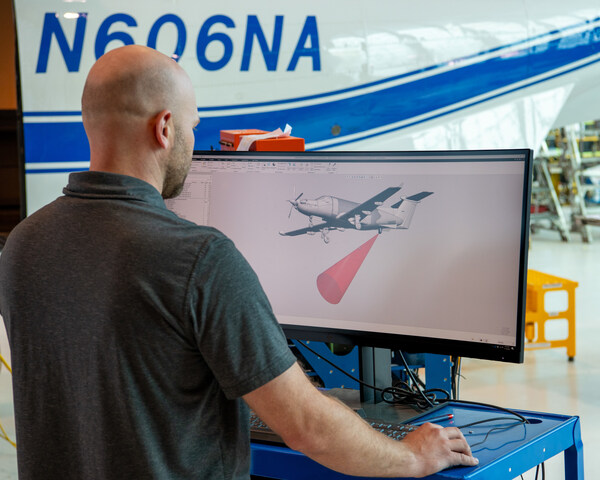Vecta Labs said this week that it recently finished a successful trial of AI-driven RF interference hunting in Miami, FL with a Tier 1 operator.
The company, founded in 2014, specializes in manufacturing and testing mobile radio frequency devices including antennas, as well as in resolving passive intermodulation (PIM) issues. Vecta said that it has spent three years developing the machine-learning engine that is the brains of its RF Seeker offering, based on extensive data collection and precise algorithms plus “rigorous testing” to refine the AI interference hunting solution, which it said adapts to various RF interference patterns.
The first real-world deployment of its AI interference hunting solution provided “quick, accurate results” in a demanding urban RF environment, according to Vecta. “The results were nothing short of remarkable. Our interference experts used RF Seeker to locate interference sources with pinpoint accuracy, allowing the operator to address these issues swiftly and effectively,” the company said in a release, adding that RF seeker enables users to “pinpoint issues within minutes and with precision down to a few meters. This leap forward not only enhances efficiency but also makes advanced RF knowledge unnecessary for effective interference management.”
“The Miami launch marks just the beginning for RF Seeker,” said Mike Symes, co-founder and director at Vecta Labs. “We plan to expand deployments to other major cities, continually enhancing the tool based on user feedback. The vision is to eliminate interference as a connectivity barrier, fostering the growth and innovation of the wireless industry.”
In other test news:
–NASA is testing out real-time laser-based networking communications at the Glenn Research Center in Cleveland, prepping a system that is meant to enable the public to watch HD video from the moon during upcoming Artemis missions.

In an upcoming showcase, researchers flying over Lake Erie will test communications between NASA Glenn and the aircraft using High-Rate Delay Tolerant Networking developed by Glenn, which transfers data over laser communications links at 1.2 Gbps, according to NASA.
The use of laser-based optical communications links is being explored as part of NASA’s interest in streaming very high-bandwidth video and other data from deep space. The space agency noted that earlier this summer, a Glenn research team streamed 4K video to the International Space Station from an aircraft for the very first time. In December 2023, NASA also streamed a 15-second test video featuring a cat named Taters back to Earth from nearly 19 million miles away in deep space, using laser communications. The video signal in that instance took 101 seconds to reach Earth, NASA said in a blog post, and was sent at the system’s maximum bit rate of 267 Mbps.
-The Federal Communications Commission this week launched a new speed test application for consumers, meant to help assess network performance. It replaces a previous FCC speed test app (which now no longer allows users to run tests) and offers new features including an in-app map that displays where the test was taken, plus the ability to log in to the National Broadband Map from the app. The app is also part of the FCC’s Broadband Data Collection program, the FCC said; tests can be used as part of challenges to provider-reported coverage, according to the agency, and the crowdsourced data will also help inform policy decisions.
“Consumers deserve to know where they have mobile coverage and at what speeds and the FCC wants to include their experiences in our effort to create a more precise map of available coverage,” said FCC Chairwoman Jessica Rosenworcel. “Our new app makes it easier to share real-world experience with connectivity, empowering consumers and making it possible for up-to-date and crowdsourced information to inform our mapping.”
–Keysight Technologies said that its RAN Intelligent Controller (RIC) test solutions are being used by the University of Malaga’s Mobile & Aerospace Networks Lab (MobileNet) within the Telecommunications Institute (TELMA), to create testing models for RICs that include both the near-real-time RIC and non-real-time RIC.
–Anritsu has been working with private network company Liteon Technology to verify performance of its 5G New Radio Open radio units (O-RUs), using Anritsu’s MT8000A Radio Communication Test Station and its MX773000PC Open Distributed Unit (O-DU) Emulator Platform Software Solution.
–Friendly Technologies has released a major update to its Unified Device Management Platform with a focus on FCC reporting and diagnostic features meant to help boost network performance and simplify regulatory compliance. In particular, the key enhanced features include automated speed and latency tests with pre-defined schedules and cross-talk detection, as well as comprehensive FCC reporting that gives detailed insights into each test attempt and enables easy review, analysis and exporting of data for either regulatory reports or for use in network optimization efforts.
–Rohde & Schwarz this week touted what it says is the industry’s first ASIC-based zone triggering in its MXO oscilloscope series. The MXO series can offer “the world’s fastest zone trigger update rate of up to 600,000 waveforms per second,” the test company said, adding that it is up to 10,000 times faster than competitors’ zone-triggering offerings in order to more precisely isolate events.
Philip Diegmann, VP of oscilloscopes at Rohde & Schwarz, said that the ASIC technology involved is “the foundation of the breakthrough signal visibility and user responsiveness of the MXO series. The chip design was laid out to have further hardware acceleration capabilities enabled down the road. This way we keep providing new functionalities to our oscilloscope customers never before seen in the industry.”
–Ookla reported this week that Paris is largely 5G-ready (assuming your home carrier has a good roaming agreement in place), just in time for the start of the Olympics. But there are a few holes, as noted in this story.
–e& UAE and Ericsson are putting 5G RedCap in play on e&’s 5G Standalone network, in FDD and TDD spectrum. Read more here.

